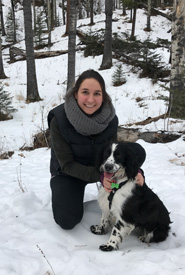Conservation Volunteers for the bees
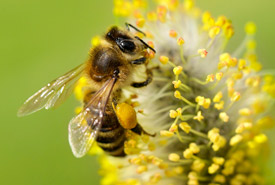
Honey bee (Photo from Bees Matter)
Honey bees are incredible; there’s no denying it. They help pollinate flowers, which in turn enables the production of our food. They’re also responsible for making honey, a delicious and great sugar source.
However, honey bees are not native to North America. You won’t find a colony in any Canadian forest, grassland or mountain ridge. Instead, here in Canada, we see hundreds of native bees, often different looking from our conceptualized idea of a fluffy, black and yellow bee, fly by without a second thought.
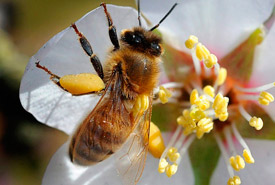
Honey bee (Photo by Michael McCollum/Canadian Press)
This year in Alberta, the Nature Conservancy of Canada’s (NCC’s) Conservation Volunteers program put together a variety of pollinator events that focused on the conservation of habitat for these native bees. With around 320 species of bees found in Alberta, it’s important to protect and rebuild their lost or damaged habitats.
Through public and corporate engagement, NCC’s conservation engagement team in Alberta completed five bee-related volunteer events this season, with an additional three events scheduled before the snow falls.
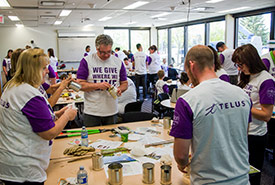
Participants at the Telus bee hotel event (Photo by NCC)
In the spring and early summer, volunteers headed out to our Gambling Lake property to check on our underground bee hotels (similar to an above-ground bee hotel) and planted a total of 415 native shrubs and flowers. These events helped develop more habitat for native bees by supplementing and diversifying existing habitats to increase the bees’ productivity.
Considering 80 per cent of Alberta’s native bees are the ground-nesting species, underground bee hotels provide suitable habitat in an area that is otherwise lacking. Thanks to the native shrubs and flowers planted by the volunteers, pollinators now have access to a variety of food sources that bloom throughout the spring and summer and into the fall.
In addition to the events in the field, we also hosted two bee hotel workshops, where our volunteers were taught about the importance of bees and instructed on how to build an above-ground bee hotel for their own backyard. These hotels provide nesting habitat for the remaining 20 per cent of solitary Alberta bees that live in above-ground cavities.
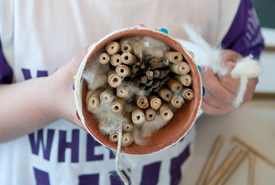
The final product: a five-star bee hotel (Photo by NCC)
A new, exciting citizen science project also began this year. Assisted by NCC staff, seasoned volunteers undertook detailed monitoring duties of five pollinator plots at our Gambling Lake property. Volunteers visited twice a month to record observations of pollinators at the five different plots. These plots also have been weeded and replanted with native flowers and shrubs. This data will be used to determine if the replanting was a success and to direct further initiatives of this kind on this and other properties in Alberta.
Through our efforts this year, 113 volunteers learned a little bit more about Alberta’s native bees and contributed to our conservation initiatives. We are hopeful this number will surpass 200 by the end of 2017, as we prepare for our last few pollinator events. If you would like to get involved with our pollinator projects or simply lend a hand in conservation, join us by signing up for an event here.

